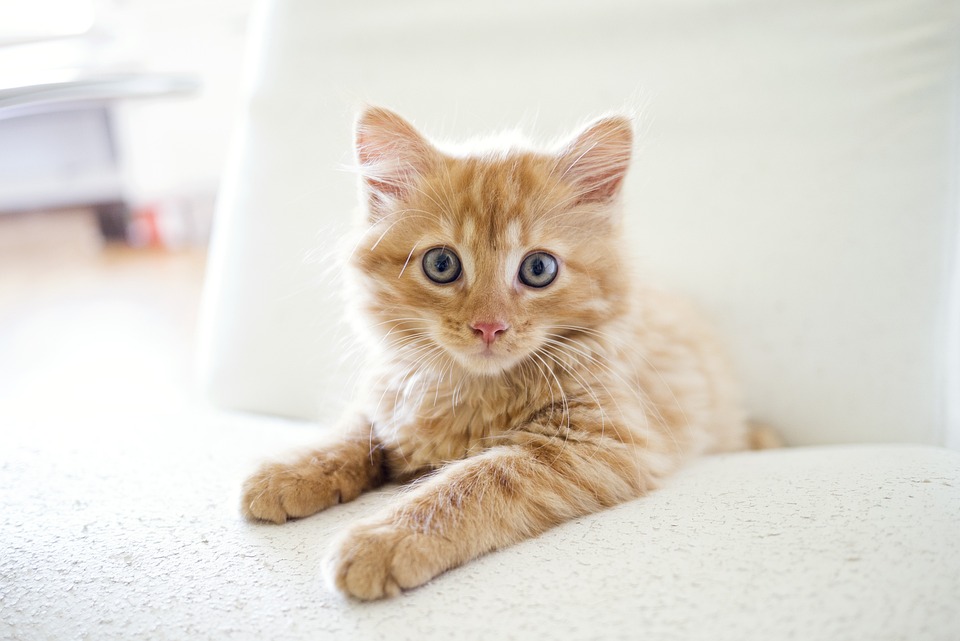Cats are fascinating creatures known for their grooming habits and unique behaviors. One such behavior is grooming, which serves multiple purposes beyond just cleanliness. In fact, grooming behavior in cats can also be a means of scent-marking. In this article, we will explore the connection between grooming and scent-marking, helping you understand your feline friend’s behavior better.
Scent-marking is a significant aspect of a cat’s communication. Cats have scent glands located in various parts of their bodies, including their face, paws, and tail. By scent-marking, cats leave chemical signals that convey information to other cats. This behavior helps them establish territory, communicate with other cats, and determine social hierarchy.
Grooming behavior, on the other hand, is an instinctual habit in cats. Cats groom themselves for several reasons, including hygiene, temperature regulation, and bonding. However, grooming also plays a crucial role in maintaining scent identity and spreading scent throughout a cat’s body.
Understanding the chemical signals in a cat’s scent is essential to comprehend the link between grooming and scent-marking. Cats have unique scent profiles that are specific to each individual. These scents consist of pheromones that convey information about the cat’s sex, reproductive status, and social rank. Through grooming, cats spread these scents throughout their bodies, ensuring that their unique scent identity is maintained.
There are several common grooming behaviors associated with scent-marking. These include rubbing their face against objects or people, scratching surfaces, and even spraying urine. By engaging in these behaviors, cats leave their scent behind, marking their territory and communicating with other cats.
Observing changes in grooming patterns can also be a sign of scent-marking. If your cat suddenly starts grooming excessively or in specific areas, it may be an indication of scent-marking behavior. However, it is important to differentiate between scent-marking grooming and regular grooming. Regular grooming is usually symmetrical and thorough, while scent-marking grooming may be focused on specific areas or objects.
Now, let’s address some frequently asked questions about grooming behavior as scent-marking in cats:
1. Can neutered/spayed cats still exhibit scent-marking grooming behavior?
Yes, neutered or spayed cats can still exhibit scent-marking grooming behavior. While neutering or spaying may reduce the intensity of scent-marking behaviors, it does not eliminate them entirely.
2. Is excessive grooming a cause for concern?
Excessive grooming can be a cause for concern, as it may indicate underlying health issues or stress. If you notice your cat grooming excessively or developing bald patches, it is advisable to consult a veterinarian.
3. How can I discourage my cat from scent-marking indoors?
To discourage indoor scent-marking, it is important to provide your cat with appropriate outlets for their natural behaviors. This can include providing scratching posts, interactive toys, and creating a stimulating environment. Additionally, using pheromone sprays or diffusers can help reduce the urge to scent-mark.
4. Are there any health issues related to excessive grooming/scent-marking?
Excessive grooming or scent-marking can lead to skin irritation, hair loss, and even the development of sores. It is crucial to monitor your cat’s grooming behavior and seek veterinary advice if you notice any concerning changes.
5. Can grooming behavior change with age?
Yes, grooming behavior can change with age. Older cats may groom themselves less due to decreased flexibility or joint issues. Additionally, changes in grooming behavior can also be a sign of underlying health problems, so it is important to monitor your cat’s habits closely.
In conclusion, grooming behavior in cats is not merely about cleanliness; it also serves as a means of scent-marking. By understanding the connection between grooming and scent-marking, cat owners can gain valuable insights into their furry companions’ behaviors. Remember to observe your cat’s grooming habits, as they provide valuable information about their communication, territory, and overall well-being.








